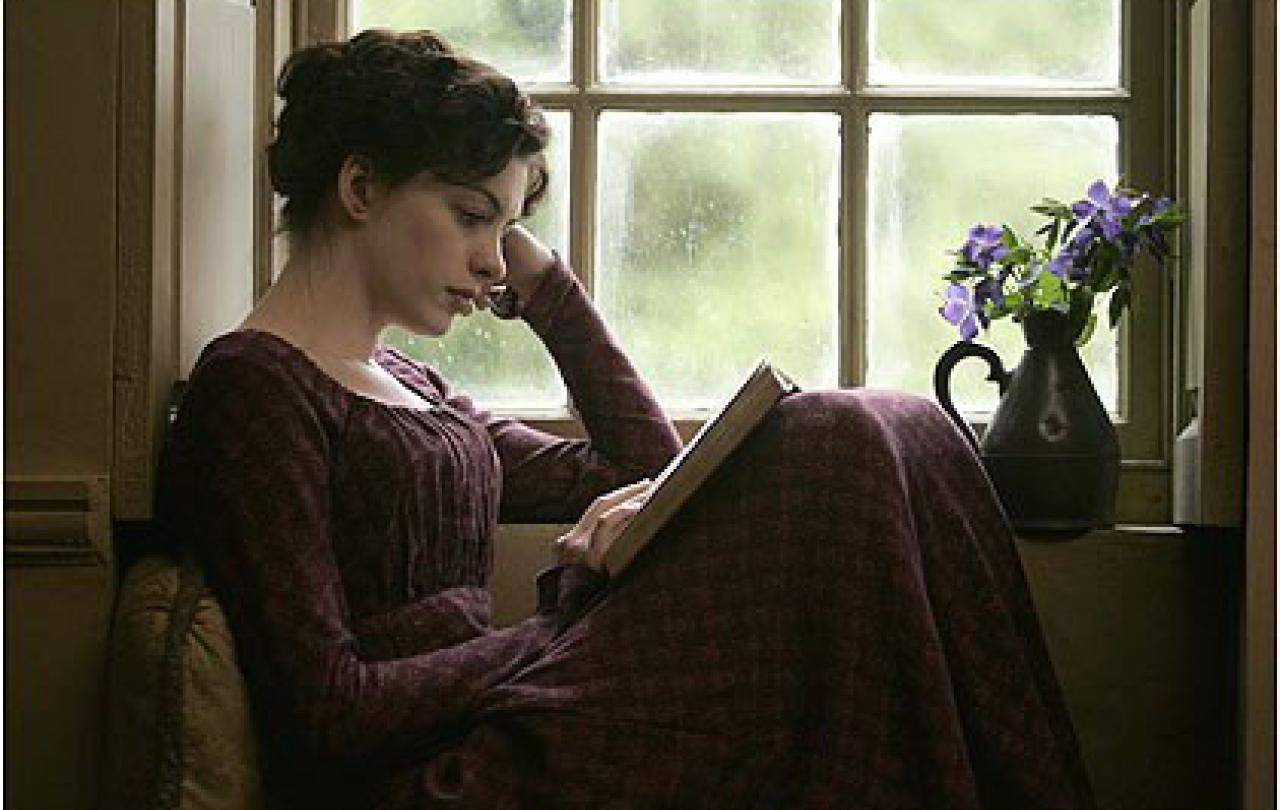
‘There just wasn’t a comprehensive book on Jane Austen’s faith’, Brenda Cox told me when I chatted to her recently, ‘That’s why I decided to write one’. She’s right. There are a handful of books that treat Austen’s Anglican faith seriously, even extensively. Irene Collins’ two books on Austen, Jane Austen and the Clergy (1994) and Jane Austen: The Parson’s Daughter (1998), as well as Laura Mooneyham White’s Jane Austen’s Anglicanism (2011) are excellent examples. But they’re also very academic. On the other hand, Cox’s new book Fashionable Goodness: Christianity in Jane Austen’s England (2022) achieves something truly remarkable: it’s both highly accessible – assuming no prior knowledge of Austen’s life, of theology, or of Regency history – and highly insightful. It’s a true labour of love (Cox told me she spent years on reading and research), and it shows. Before I say anything else about Fashionable Goodness, let me urge you to read it. If you want to understand the way Austen and her characters saw the world around them, this is the book to pick up.
I’ve spent the last ten odd years reading, thinking, and writing about Austen, and yet Cox has made me see her novels in a new light. What she does best is to help us immerse ourselves into the daily life of Regency people, detailing in the first part of her book how the Church of England functioned in Austen’s times. She explains the difference between a vicar, a rector, and a curate; what tithes were; what exams a young man had to pass to become an ordained priest. As I was reading Cox’s book, Austen’s characters gradually came alive in my imagination like never before. Learning more about how they lived their faith day to day helped me to better grasp their motivations and their behaviour. For example, how many readers (myself included!) have been left confused by the passage in Persuasion where Anne judges her cousin Mr. Elliot for his habits of ‘Sunday traveling’? It only starts to make sense once we know that traveling on a Sunday would have likely meant missing church attendance, of which Austen disapproved. Similarly, in Mansfield Park Mary Crawford’s scoffing remark that Edmund Bertram will become ‘a celebrated preacher in some great society of Methodists’ will mean little to us unless we know that in the early 19th century Methodists were often treated suspiciously and looked down upon as overly emotional and ‘enthusiastic’. To my surprise, even my opinion of Austen’s most notoriously silly clergyman, Pride and Prejudice’s Mr. Collins, improved. Cox points out that Mr. Collins writes at least some of his own sermons, at a time when many clergymen would simply pick ready-written sermons out of a sermon book; he is also resident in his own parish of Hunsford after marrying Charlotte Lucas, when non-residence – the practice of a priest delegating all duties to a curate and living away from the parish – was common. Mr. Collins may be irritating and obsequious to a fault, but if we judge him by the standards of his own time, not of ours, he emerges as quite a respectable man after all.
Far from being in ignorance of these changes in religious sensibility, Austen observed them, and they gave her hope.
And that is something else that Cox does brilliantly: she shows us that the past is indeed a foreign country, with different moral standards. Instead of trying to find ways in which we’re similar to the people of Austen’s England, Cox helps us to realise that the values and assumptions of Austen’s England are radically different from ours. Even our language is different. Focusing on what she identifies as key ‘faith words’, Cox shows us that we cannot understand just how deeply English society was steeped in the Christian faith, unless we recognise the religious significance that many words had in Austen’s times. For example, when Elinor Dashwood cries to her sister Marianne, ‘Exert yourself’ in Sense and Sensibility, she doesn’t simply mean that Marianne should be less emotionally affected by Willoughby’s betrayal. Rather, she’s reminding Marianne of her religious duty of ‘exertion’, meaning not giving in to despair. Or, when Anne Elliot engages in ‘An interval of meditation, serious and grateful’ after her engagement to Captain Wentworth in Persuasion, we should not understand Anne’s ‘serious meditation’ as mere reflection; Austen would have expected her readers to know that, in this passage, Anne is examining her conscience and specifically praying. Even the word ‘manners’, often mentioned in Mansfield Park, had a deeper meaning than simply social graces, pointing to a person’s religious principles. Cox encourages us to notice these differences, and to let the past change our way of seeing the world through its alienness.
Lastly, Cox also presents an England whose religious sensibilities were changing fast. The Church of England faced pressure to address its problems. Pluralism, the practice of one clergyman serving several parishes, meant that some members of the clergy were very well off, while others struggled to make a living. In turn, this encouraged non-residence – especially if the parishes were far from each other – and led to the non-resident parishes to be neglected. But at the same time, the Church of England was also being infused with newly found religious fervour. The Evangelical and Methodist movements, still officially part of the Anglican Church at this point, were spreading at a rapid pace thanks to figures like George Whitfield and the Wesley brothers, championing many worthy causes in the name of the Christian faith. The abolitionist movement heralded by Wilberforce, Clarkson, and Hannah More was gaining momentum just as Austen was beginning to write novels. By the time Sense and Sensibility, her first, was published, the slave trade had been abolished in England. Sunday schools were opening up which would educate thousands and thousands of children in the 19th century; the prison reform movement was gaining popularity, as were efforts to combat animal cruelty and ensure better conditions for factory workers. Goodness, as Cox puts it, was becoming fashionable in England.
What about Austen herself? Cox tells us that she mentions reading the works of abolitionists with pleasure in her letters, as well as remarking on the newly emerging Evangelical movement with somewhat like cautious admiration. Far from being in ignorance of these changes in religious sensibility, Austen observed them, and they gave her hope. As Cox quotes in the final chapter of Fashionable Goodness, in an 1814 letter to her friend Martha Lloyd, Austen describes England as ‘a Nation in spite of much Evil improving in Religion’. Austen was confident that faithful Christians could rise to the challenges placed before them, and this confidence is reflected in her heroines and heroes, whose storylines trace their growth in virtue. It’s perhaps not a coincidence that 1814 is also the year Austen started working on Mansfield Park, a novel whose heroine, Fanny Price, is famously the most ardent in her moral principles. Fanny’s ‘goodness’, however – which the narrator often explicitly mentions – is no longer fashionable. Contemporary readers of Austen tend to dislike her seriousness and her outspoken religiosity. But perhaps, if we join Brenda Cox in immersing ourselves in the alien country that is Regency England, we can learn to judge the ‘goodness’ of Austen’s characters by different standards from our own. Perhaps we can free ourselves of our prejudices, and appreciate earnest characters like Fanny, as well as witty ones, like Emma Woodhouse or Elizabeth Bennet. Perhaps we too, like Austen herself, will gain hope that ‘goodness’ can be made fashionable once more in our time.





